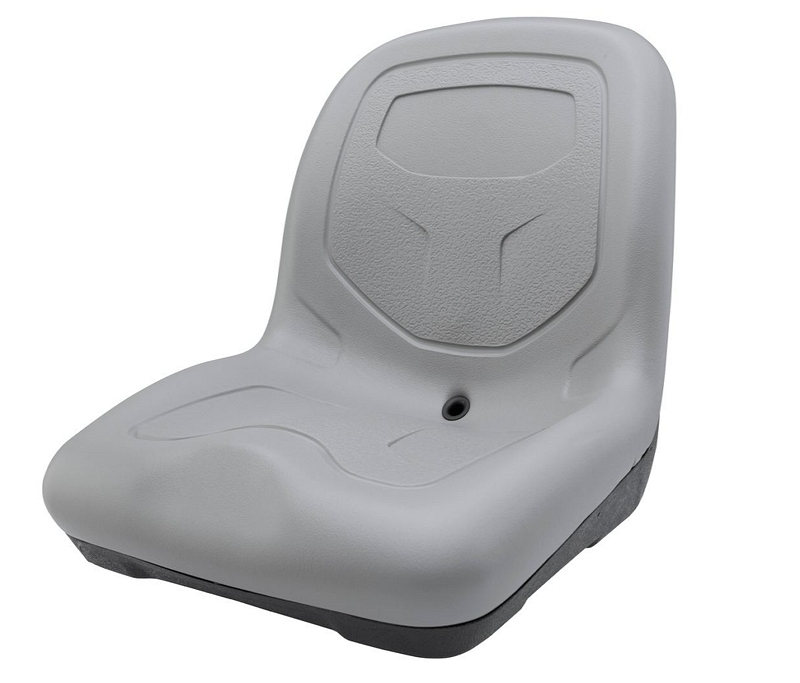A swivel seat is a perfect solution for adding extra seating where space is tight. It’s also great for kitchens or other areas where you don’t want chairs stuck in one spot, especially when they are needed more frequently than others.
A swivel seat can be as fancy as you like, but you can start with a basic wood model that will be just as sturdy and comfortable.

Steps on Building a Swivel Seat
Step 1. Measure the openings for how wide and how deep you want your seat to be.
In this case, a 15″ width by 2″ depth is ideal for building a swivel seat that fits under a table or narrow counter.
Step 2. To build the actual base pieces of wood, cut two 16″ lengths of 1×2. These will be used as legs. Cut four 3″ pieces of 1×3 – these will serve as uprights from which you’ll attach the seat top and bottom (described below).
You may need to rip these pieces down to 2-1/4 inches wide on your table saw ). Cut four 36″ lengths of 1×2 as cross supports or braces.
Step 3. Make sure all the pieces are clear of knots and other defects. You may want to pre-drill some holes in the uprights for attaching them to the seat top & bottom (see below). Sand all wood until smooth, then finish as you like.
Are swivel seats safe?
Swivel seats, like any other riding tool or device, should be used responsibly within a child’s ability and with adult supervision. Adult riders may choose to use the swivel seat on some horses that they feel are safe for them to do so (the seat must still be attached at all times). Swivel seats can cause discomfort if they are not adjusted correctly.
Children must learn how to adjust their seats while there is an adult around for assistance. A swivel seat cannot be adjusted during a ride- you must make sure it fits your body well before mounting your horse.
What is a swivel chair?
The swivel chair seat is one of the most popular riding seats available, for good reason. It offers great back support for both horse and rider, it’s easy to mount from a sitting position, and you don’t need stirrups or a horn to ride with this seat.
The vinyl material used in making these seats can stretch after repeated use. This limits the number of people who will be able to fit on an adjustable seat as well as how high they can raise the back.
For example, if your child is tall, he or she may not be able to adjust the seat high enough so that their legs come up straight without needing some assistance from a parent or adult friend around when mounting.
That said there are many brands of swivel seats available for purchase and many riders who have made one themselves from wood, metal or synthetic materials.
- Adjustable Swivel Seat: Vinyl or Canvas
Riders who experience knee pain are often able to use an adjustable seat with great results if they can find one at a reasonable cost. These seats generally adjust the height of both the back and front legs independently; how far up/down they move is dependent on how much weight it has to support (which is why you’ll see taller people having their feet farther off the ground).
Another nice feature of these seats are padded armrests which allow your arms to swing back and forth behind you instead of being locked in one position – again offering better circulation, reduced wear and tear on your wrists, and generally a more enjoyable experience.
How do you Remove a Chair From the Base?
If you’ve got a chair that wobbles, first make sure there’s nothing else at fault. Check how well the legs are attached to the base – tighten or move them into their proper position. Look for damaged areas on the leg where it connects to the seat – replace it if possible or glue together with wood putty if not.
Move on to how it feels – is it firm/weak in certain spots? Try tightening up your screws and replacing any broken parts.
If none of these work, then remove as much weight as possible from the chair (if you’re one person, your body should be enough) and begin rocking back and forth while tapping down or pushing forward. This will cause friction which can weaken any stuck points; eventually, it’ll come loose.
Unstick the splines of your chair – use rubbing alcohol and a paintbrush to loosen up any rubber stuck in the way. You can also place an ice cube on top of where you’re trying to spin, wait for the resin to soften from heat, before twisting it off with a flat head screwdriver.
If that still doesn’t fix it, try sanding down how hard you press into each spin location – using between 150-400 grit sandpaper will smooth out how much weight is transferred into each leg.
